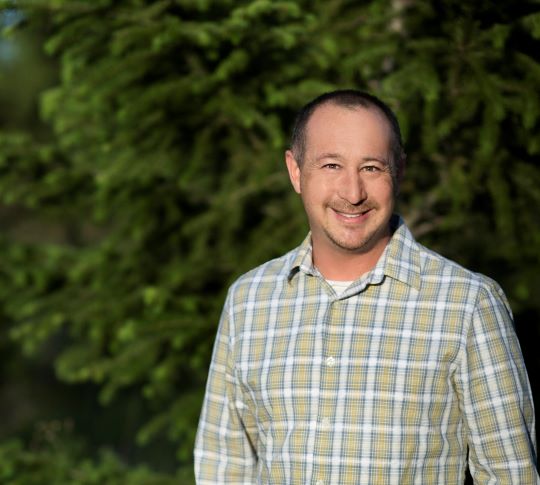
By Steven F. Kozuki, RPF
The climate is becoming warmer. One reason for this is believed to be the increasing amounts of greenhouse gases in the atmosphere. Like other greenhouse gases such as water vapour and methane, carbon dioxide absorbs heat from the sun. The more greenhouse gases there are in the atmosphere, the more heat is absorbed. Therefore, one way to take action on climate change is to use forests to remove more carbon dioxide from the atmosphere.
Carbon moves and changes all the time on planet Earth. It exists in the air, water, land, and every living thing. It moves around and back again in an endless cycle and forests are a significant part of this global carbon cycle. Growing trees use sunlight and water to absorb carbon dioxide from the air. At the same time, growing trees make a type of sugar and release oxygen. The carbon in the tree becomes part of the tree’s roots, stems, and leaves. This process of using sunlight to grow organic biomass is called photosynthesis and is the basis for most life on Earth.
The Paris Agreement is an international treaty to limit global warming. Article 5 of the agreement invites countries to take action and manage greenhouse gases in their forests. This is because forests absorb carbon dioxide and provide oxygen as they grow, and carbon is stored in the wood until it decays or burns. Therefore, planting more trees absorbs more carbon, and burning less wood emits fewer greenhouse gases. Further greenhouse gas benefits are also possible by using more wood in buildings and less concrete or steel, and by using wood to make green energy instead of using fossil fuels.
Most healthy forests have a positive carbon balance, absorbing more greenhouse gases from the atmosphere than they emit. However, severe events such as the Mountain Pine Beetle epidemic and the catastrophic wildfires of 2017, 2018, and 2021 in British Columbia can cause many trees to suddenly die and become greenhouse gas emitters.
Government reforestation projects involve planting trees in areas affected by natural disturbances. Compared with natural forest regeneration, planting accelerates the rate at which these areas return to being healthy growing forests. Healthy young forests have a positive carbon balance, drawing down more carbon dioxide from the atmosphere than they emit. However, when disturbances occur such as wildfire or insect attack, many trees die, tree growth decreases, decomposition rates increase, and the stands shift to having a negative carbon balance.
Forest carbon balance is quantified in units of “tonnes of carbon dioxide equivalent” (tCO2e). This unit is used to describe the impact of all types of greenhouse gas emissions, including methane and nitrous oxides, which are released by fire and are much more potent for global warming.
When determining if a potential forestry project is net carbon positive or net carbon negative, the BC Forest Carbon Initiative models estimate 1) how many tonnes of CO2e are absorbed or avoided, 2) the amount of CO2e expended to do the project, and 3) whether the project is over-and-above what would naturally happen.
By 2022, the projects funded by the Forest Enhancement Society of BC will have planted over 70 million trees, which, along with other FESBC projects, will generate a net positive 5.3 million tonnes CO2e, which is equivalent to taking 1.1 million cars off the road for a year. Planting trees on areas that otherwise would not have been reforested is a big part of the climate change solution. And in B.C., many climate change heroes are the hard-working women and men working in our forests.
Steven F Kozuki, RPF, Executive Director, Forest Enhancement Society of B.C.
Steven has worked within the forest industry since the 1984. He graduated with his Bachelor of Science in Forestry in 1994 and has held various positions from Timber Valuation Coordinator for Weldwood and General Manager of Forestry for the Council of Forest Industries, to working in BC Timber Sales and timber pricing for the BC Public Service. He is passionate about the work FESBC does to advance the environmental and resource stewardship of B.C.’s forests.
For an interview with FESBC regarding nature-based forestry solutions to take action on climate change, contact:
Forest Enhancement Society of BC
Aleece Laird, Communications Liaison
Direct: 250 574 0221 | communications@fesbc.ca

